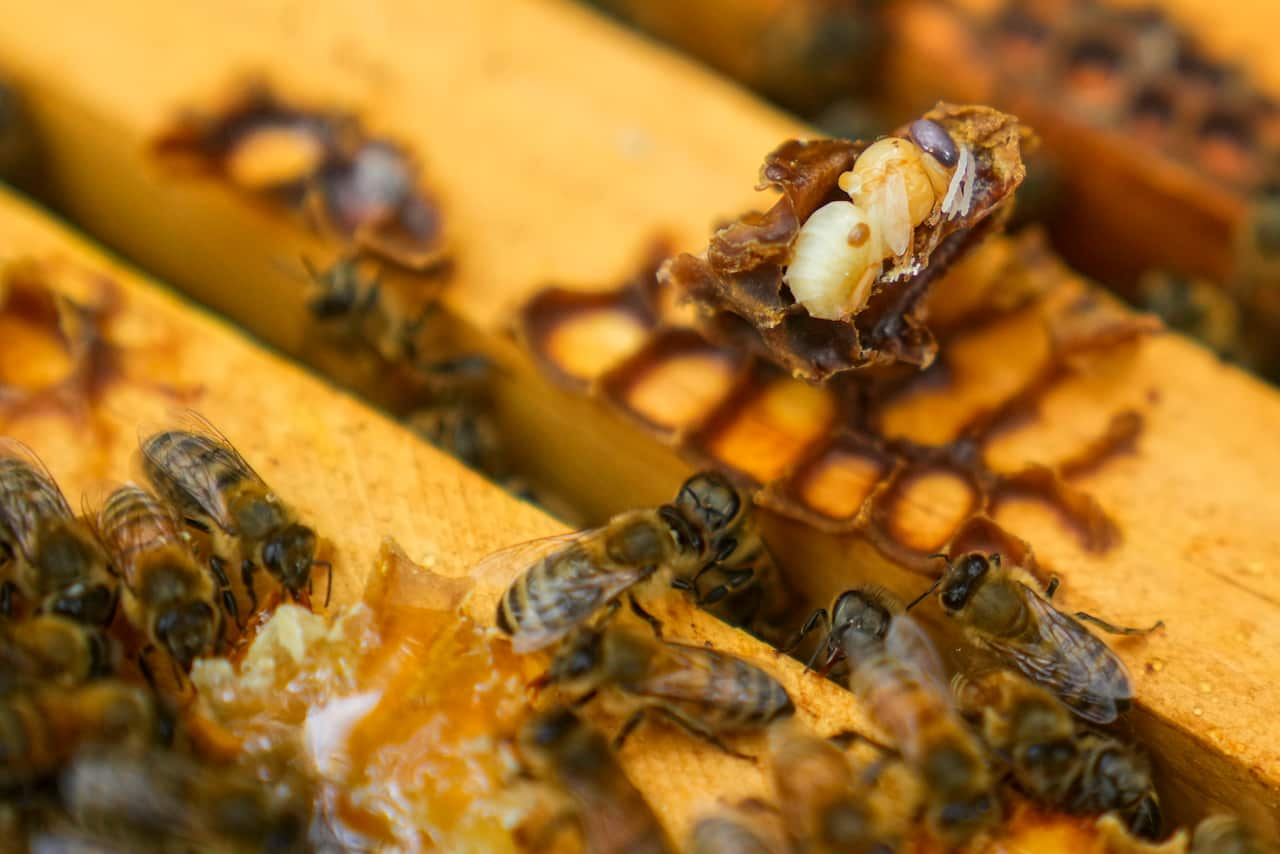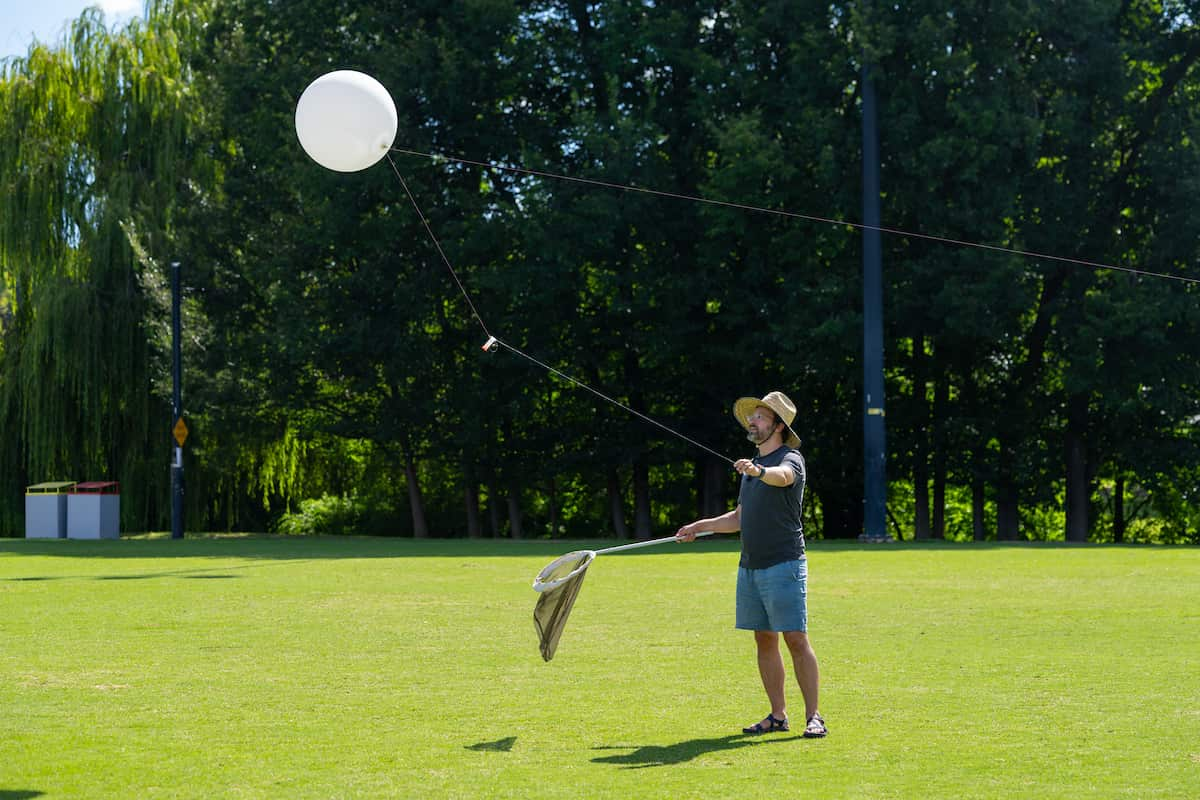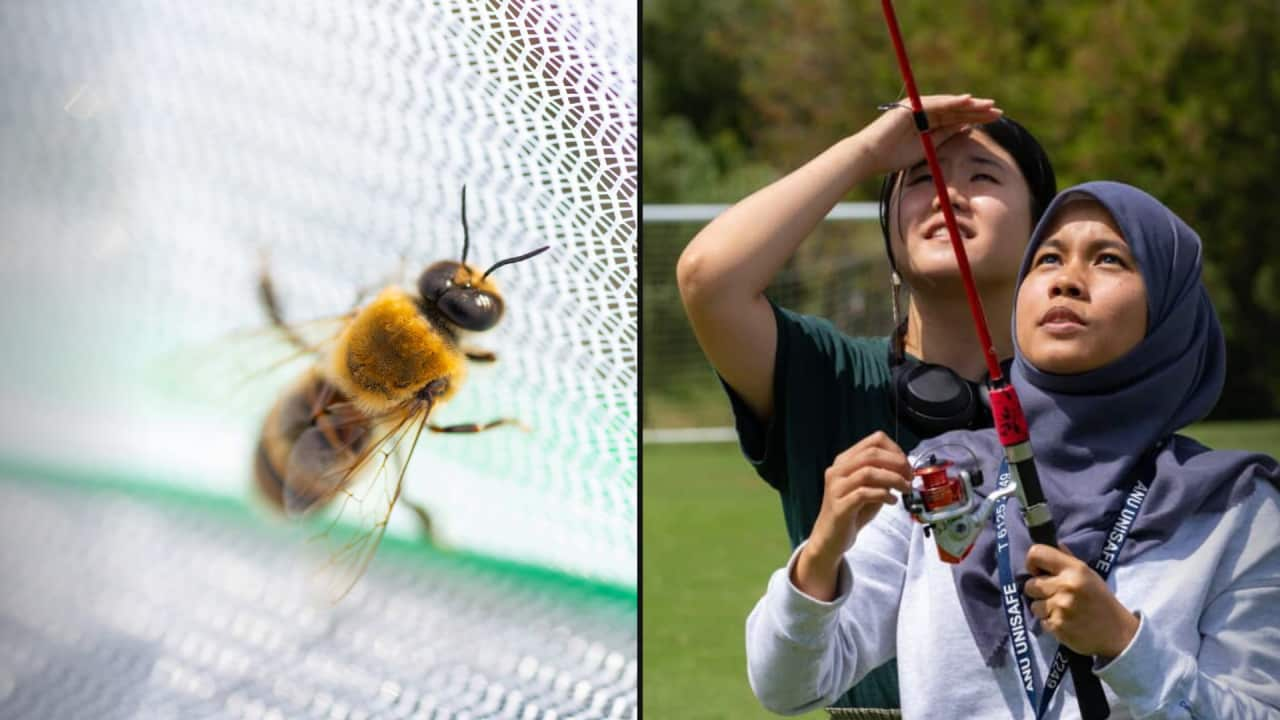Key Points
- First detected in NSW in 2022, the varroa mite is expected to kill all honey bees in the wild.
- Scientists at the ANU Bee Lab are researching the survival mechanisms of wild honey bees.
- As part of their research, they are calling on the general public to help.
In 2022, soon after Australia reopened its borders from COVID-19, another pandemic crept into the country. This time it came for Australia’s bees.
The varroa mite is a parasite that spreads viruses among bee populations and eventually kills them.
After appearing in Europe in the 1960s and USA in the 1980s, it gradually changed the beekeeping industries there. Among other measures, beekeepers had to bear higher costs and switch to constant use of pesticides to fight the mite.
The honey bee industry in Australia is worth. Bees are critical not just for producing honey, but for agriculture: 35 per cent of crops in Australia depend on bee pollination.
The varroa mite on a dead bee in a hive (AAP) Source: AP / Julio Cortez/AP
Australia had been the last varroa mite-free continent, until the parasite was detected in NSW in June 2022.
According to a spokesperson from the NSW’s Department of Primary Industries, approximately 47,000 bee hives were euthanised across the state during the initial response with an aim of stopping the spread.
But by September 2022, the government admitted that it wasn’t feasible to eradicate the mite and changed its focus to ongoing management.
Frank Currenti, a co-owner of the Hidden Valley Farms in Goulburn, NSW, told SBS Russian that his beehives have not been affected by the mite yet, but, in his opinion it is only a matter of time.
“We receive weekly updates from the Department of Agriculture as to where varroa is and what actions are being taken,” he said.
“We’ve been educated, I guess, when opening up a bee hive, what to look for. You can actually also purchase strips that will capture varroa mite. So far we have not been affected, but it really is just a matter of time.”
Interactive map of detected Varroa mite cases. Source: NSW Department of Primary Industries
‘Australia has a unique opportunity’
Professor Sasha Mikheyev, an evolutionary biologist at the Australian National University (ANU), believes studying wild honey bees now is imperative to securing their future.
“Chemical methods of control of varroa mite have some big drawbacks, since the mite itself adapts to pesticides. Over time, more pesticides are needed, and then they need to be changed,” he told SBS Russian.
This is an endless process, and we are losing it both in North America and in Europe.
Professor Sasha Mikheyev, Australian National University
Prof Mikheyev leads a “Bee Lab” at the ANU which aims to research the genome of wild bees responsible for their resistance to varroa mite.
This kind of research, he explained, was not possible in Europe back when the mite was spreading there and slowly killing the population of wild bees.
“Although more than 90 per cent of wild honey bees eventually die because of the varroa mite, they still leave a certain number of descendants. It is therefore, in theory, possible to breed resistant bees from them,” he said.
Professor Sasha Mikheyev demonstrates how to capture and monitor wild honey bees. Credit: Nic Vevers/Nic Vevers/ANU
However, Prof Mikheyev said this resistance mechanism is currently unknown. This is because after bee population dies out, their gene pool changes significantly.
“Partially due to natural selection, that is, some genes help resistance against varroa mite, and some genes simply change randomly.
“Therefore it is almost impossible to distinguish random genes from the genes that have something to do with the varroa mite resistance,” he said.
That is where Australia has a unique opportunity, Prof Mikheyev argued.
Because there are still bee populations unexposed to varroa mite, scientists can gather data and compare it with the one from the bees that survived the mite.
“This will allow us to detect the genome responsible for resistance to varroa mite,” he said.
But we only have a few years to carry out this type of research across Australia and study the gene pool of wild bees.
Professor Sasha Mikheyev, Australian National University
Flight of the honey bee catchers
Prof Mikheyev and his colleagues at the “Bee Lab” have and are inviting members of the public to participate.
As part of the project, people are encouraged to catch wild bees and help in collecting as much data on their genome as possible.
The only requirements are a scoop-net and a nearby oval.
“It’s not a widely known fact, but wild male bees gather around open fields where they usually wait for a queen bee,” Prof Mikheyev explained.
“They can be attracted using the queen pheromone and collected in huge numbers. One can attach a pheromone to a balloon with helium and lure drones using a bait, and then collect them with a scoop-net.”
This would be challenging to do for one person. But together we can collect as many of them as we like.
Professor Sasha Mikheyev, Australian National University
For anyone interested, scientists at the “Bee Lab” will send a pheromone bait, instructions and a container for collecting the drones.
“If someone can spend a couple of hours and collect some wild drones at a local sports field, this will give us very interesting data,” Prof Mikheyev said.
Apart from potentially singling out the resistance genome, researchers could also use the collected bees to study the evolution of the varroa mite, as some of them would be already contaminated.
“We can also study crude viruses that are caused by the mite exposure, and observe how the mite exposure affects the virus population and its genetic diversity.
“As a result, this fairly simple method will get us a lot of useful information,” he said.


